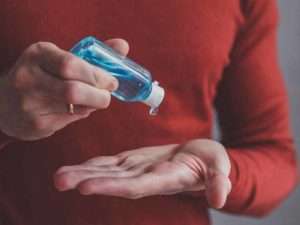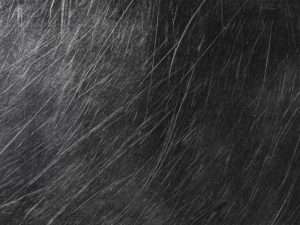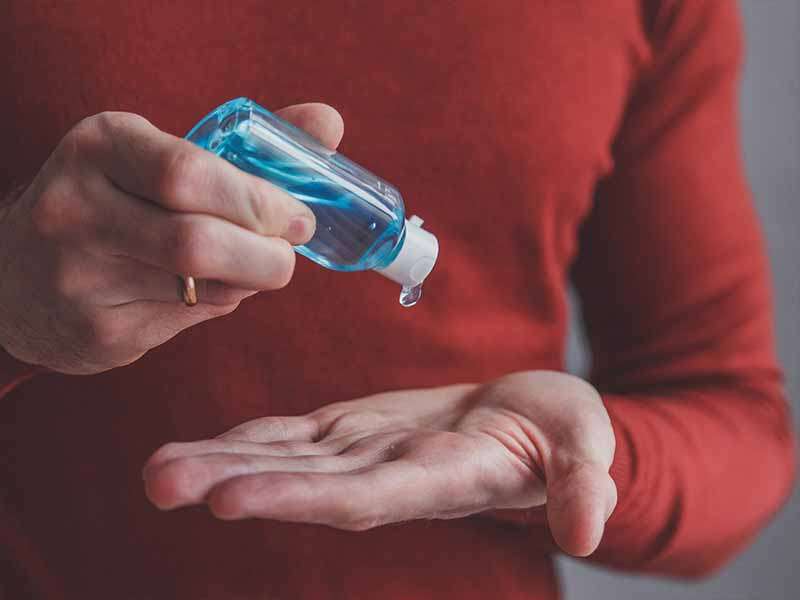Table of Contents
- How To Remove Hardened Tree Sap From Car Paint And Glass
- That may not be tree sap you’re dealing with
- What you’ll need to remove tree sap from your car
- How to remove tree sap from car paint or glass
- Alternate method to remove tree sap from your car
- How NOT to remove tree sap
- Using a paint cleaner (aka pre wax cleaner) to help clear up discoloration
- How to fix tree sap damage on car paint
- What to do once tree sap has been removed and you’ve done your best to correct etching and discoloration
- How to prevent tree sap from damaging your car or truck finish again
- Helpful Links
- Conclusion
Depending on what area of the country you live in, you’ve probably experienced tree sap on your paint job or windshield at some point. There are all types of contaminants that land on our cars and trucks that are difficult to remove but sap is probably one of the most harmful if not caught early.
It can be particularly annoying when it gets on your windshield. If it’s still somewhat soft it can get on your windshield wipers and make a real mess.
If tree sap hasn’t hardened due to baking in the sun it should be fairly simple to wipe off. It might be more difficult to remove than a simple car wash can address and we may need a solvent of some kind to help us out, but it probably won’t do any damage if removed before it hardens. You may need to use hot water to help soften the sap. Hot water may be all you need to get the job done.
How To Remove Hardened Tree Sap From Car Paint And Glass
- Wash your car before you begin
- Apply a degreaser
- Allow to dwell for 30 seconds or so
- Use a microfiber rag to remove the softened tree sap
- Repeat until you’re satisfied with the results
Once tree sap has hardened, however, removal becomes much more difficult and damage to your clear coat much more likely. Not only does it have the potential to etch into the finish, as sap dries it shrinks causing additional strain on the clear coat.
Whether you’re dealing with dried on tree sap or have caught it before it’s had a chance to harden, you’ll want to use something to help break it down. Tar remover usually isn’t strong enough. You’ll want something more powerful like Citrol 266 and a quality microfiber rag to remove it. Keep reading to learn more about removing hardened tree sap from car paint and glass.
That may not be tree sap you’re dealing with
Often what may be assumed to be tree sap really isn’t. Often what we think is tree sap is actually insect droppings. The type of droppings and the potential damage they can cause will vary from tree to tree and region to region. In general, these droppings will be acidic and can etch into your clear coat if not removed quickly.
The good news about insect droppings is that they tend to be easier to deal with than if you’re trying to remove tree sap. That doesn’t mean they will be easier but they usually aren’t as loaded with sugars like sap and don’t usually harden to a rock-like consistency.
Insects can be voracious eaters and produce a significant amount of waste. Here in my home town of Charlotte, we suffer from cankerworms regularly. We have a lot of large oak trees that they feed on yearly. Some years it is so bad that it can sound like rain from the sound of the tiny cankerworm poop pellets falling from the trees. Fortunately, cankerworm droppings are tiny pellets and generally don’t damage your car’s paint job.
While you may not be dealing with tree sap, the removal process is essentially the same. What we need to do is break down the material that is stuck to the surface of your clear coat and remove it and hopefully do so without damaging the finish.
What you’ll need to remove tree sap from your car
To break down hardened tree sap or insect droppings you’ll want something that can penetrate into the hardened contaminant and dissolve it. Bug and tar remover comes to mind for many but it usually isn’t powerful enough. Rubbing alcohol is often recommended but it isn’t the most effective solution. Citrol 266 Degreaser is ideal at penetrating and dissolving sap and droppings. Just spray it on and let it sit to make removing sap significantly easier. Citrol 266 is also ideal for removing tar, insect guts, and most any other road grime that sticks to your car or truck. While rubbing alcohol isn’t my first choice, it’s a great addition to help with difficult to remove sap.
You’ll also need a good microfiber rag. Microfiber is the ideal material for wiping the surface of your finish while having the least opportunity to cause abrasive damage. Microfiber has a thick nap which is an excellent protective layer. The microfibers within the nap can trap abrasives and keep them from grinding against the surface of your clear coat.
If you’re trying to remove tree sap from the glass you’ll want to add a razor blade to your arsenal. You don’t want to use the razor blade on your paint as you will almost certainly severely scratch the finish but glass is much safer to try to use a razor blade on.
How to remove tree sap from car paint or glass
- Wash your car thoroughly (Try hot water if you can)
- Apply a degreaser (Citrol 266 recommended)
- Let it sit and soak into the sap for 30 seconds or so
- Use a microfiber rag and a little elbow grease to try to wipe away
- If working on glass, try to get a razor blade under the sap where it should be softened
- Make sure you repeat these steps until you have removed all tree sap from your car
Alternate method to remove tree sap from your car
If you’re dealing with lots of really small dots of tree sap or insect droppings the above method could be really tedious or even impractical. An alternative is to use a clay bar for removing sap and other debris.
If you’re not familiar with using a clay bar, they’re pretty simple to use. You’ll need a clay bar, clay lubricant, and a microfiber rag. Spray clay bar lubricant over a 1-foot square area or so and then rub the clay bar across the area. Tree sap, insect droppings, and any other contaminants stuck to the surface of your finish protrude up from the smooth clear coat. As the clay bar glides across the finish these contaminants collide with the clay bar and get stuck within it and are ripped off the finish.
Depending on your situation, this may be all you need to do. You may find that a clay bar only gets you so far and you’ll need to fall back to the original method of using Citrol 266 to soften and break down the sap or droppings.
How NOT to remove tree sap
You’ll read online about a lot of various methods on how to remove sap. Mineral spirits, hand sanitizer, WD-40, lacquer thinner, lighter fluid, nail polish remover, and more. Bug and tar remover is good though but I’ve found that it isn’t powerful enough. I don’t recommend putting anything on your finish to try to remove tree sap other than Citrol 266 or any other purpose-designed product specifically formulated not to damage your car or truck’s finish. The exception to this is rubbing alcohol. You may find rubbing alcohol a helpful addition in some circumstances. It’s safe to use in moderation.
I also don’t recommend anything other than a microfiber rag that will touch your finish for this job. Make sure you don’t use a razor blade or other tool on your finish. Automotive glass is much more scratch-resistant but use caution here too. Glass isn’t scratch-proof either.
Using a paint cleaner (aka pre wax cleaner) to help clear up discoloration
If your car’s paint job has discolorations in the clear coat after removing tree sap or insect droppings then you may want to try using a paint cleaner. A paint cleaner is different from a clay bar. Clay bars remove contaminants above the surface while a paint cleaner removes contaminants from within the surface.
Paint cleaners are typically a combination of very fine abrasive and solvent. Meguiar’s makes a truly outstanding paint cleaner if this is a route you want to explore. Apply a small amount on an application pad or microfiber towel and work into the area that is discolored. It isn’t wax and doesn’t need to dry. Work it in by wiping in a straight line from the front to the back of the vehicle. When done, wipe away with a clean microfiber towel.
It’s important to note that this product is very fine abrasive so try to limit its use to stains and discolorations that have not responded to other methods.
How to fix tree sap damage on car paint
It’s very possible that tree sap or insect droppings have etched into your clear coat. This etching can cause discoloration or even a rough texture. The good news is that your clear coat has been applied specifically in part to be a sacrificial layer that can be polished to remove these light surface damages.
If you’re dealing with an isolated spot you can get a hand polishing pad and a quality fine car polish. You should be able to polish away these light marks in your car’s paint job with a little patience and elbow grease.
If you’re dealing with a more significant problem that covers a large portion of your car or truck you’re not going to want to attempt to resolve it by hand. You’ll want to pick up a good quality dual action polisher that will make short work of the task. Apply a fine quality polish and gently work your way across the affected area until the marks are removed and you have a clean surface.
If the damage is extremely bad you may have to treat it similar to how you would treat a rock chip. A good quality paint touch-up kit may be required to deal with spots that have damaged past the clear coat. Be sure to get a kit that includes a clear coat. A proper rock chip touch-up kit will include a clear coat and be designed to be leveled with a particular technique. I prefer those that provide a light polish to knock the clear coat down to even with the OEM finish.
If the damage is severe and beyond what a touch-up kit can handle you may have to explore having your car or truck repainted. Before settling on a body shop to do the work ask around your local car clubs as to who the go-to shops are. They should be able to provide you with a couple of good quality and reputable shops.
What to do once tree sap has been removed and you’ve done your best to correct etching and discoloration
After you’ve done the hard work of removing any places tree sap or insect droppings have landed on and stuck to your finish you’ll need to reapply car wax or paint sealant. Chances are that if you had a serious problem with sap or droppings you didn’t have adequate protection in the first place.
If you do keep your car or truck well protected you may need to consider upgrading your choice of protection or increase the frequency of application. I can’t recommend Wolfgang’s Deep Gloss Paint Sealant enough. In my opinion, this is the best option of all the paint protection options available. Typical car wax will only last a month or two usually. Wolfgang’s DGPS can last up to 2 years, is easier to apply than consumer-grade ceramic coatings, and performs almost as good. Also, it looks excellent with a very deep shine.
How to prevent tree sap from damaging your car or truck finish again
Besides trying to avoid parking under trees, the best line of defense against sap, droppings, and all sorts of other potential contaminants that can stick to and damage your finish is a good protective wax or sealant.
If you’re not familiar with the difference between waxes and sealants, the abbreviated explanation is that car wax doesn’t last more than a couple weeks while the best sealants can last years. As mentioned previously, I’m a big fan of Wolfgang’s Deep Gloss Paint Sealant which should last 2 years.
You may even want to consider a ceramic coating. These coatings are a next-level type of sealant designed to protect better and last longer. There are basically two grades of ceramic coating – consumer and professional. Consumer-grade is available for purchase direct to the consumer as it doesn’t have too complex an application process. Professional-grade ceramic coatings usually require certification to qualify to purchase. Consumer grades typically don’t last more than a couple of years, performing slightly better than good quality paint sealants. Professional ceramic coatings can last as long as 10 years.
The hydrophobic properties of wax, paint sealants, and ceramic coatings will help prevent sap and other road grime from getting a good hold on your clear coat. It will also make your car much easier to wash and keep clean.
It’s also a good idea to keep a couple of microfiber rags and quick detailer in your car or truck. This way you’ll have some tools handy to quickly deal with a problem like a tree sap or droppings right when you spot them. The longer you wait to deal with something that could be damaging your finish the worse the potential damage will be to your car’s paint.
Helpful Links
Conclusion
A couple of spots of baked-on hardened tree sap can be a real scare but armed with the right tools, most of the time this problem can be resolved easily enough. A little hot water can often solve the problem but if not you’ll have to get more aggressive. If hot water doesn’t work at removing tree sap, a lot of people reach for a bug and tar remover but I don’t recommend that. Many recommend using rubbing alcohol. While rubbing alcohol can work, my solvent of choice is Citrol 266 which is a citrus-based degreaser that is more powerful than most bug and tar removers but shouldn’t do damage to your finish. Spray it on and let it sit for 30 seconds or longer and it should do a great job of penetrating and breaking down the tree sap on your car’s paint.
Keep your paint properly protected with good quality paint sealant or get your car ceramic coated. This is the best defense against all types of contaminants including tree sap and insect droppings. This will make the surface far more difficult for road grime and contaminants to stick to and far easier to remove. It will also create a barrier that will help prevent your clear coat from getting etched or discolored.
Be sure to use a microfiber rag when applying elbow grease for maximum protection against causing additional damage. Stay away from products not designed for automotive use. Don’t risk potentially making a bad situation worse because you happen to have something that “might” work readily available.
If you ever feel like you’re not up to the challenge, ask around at your local car clubs for detailers in your area that come highly recommended. These are the people that will know who to direct you to that can solve your problem.
















